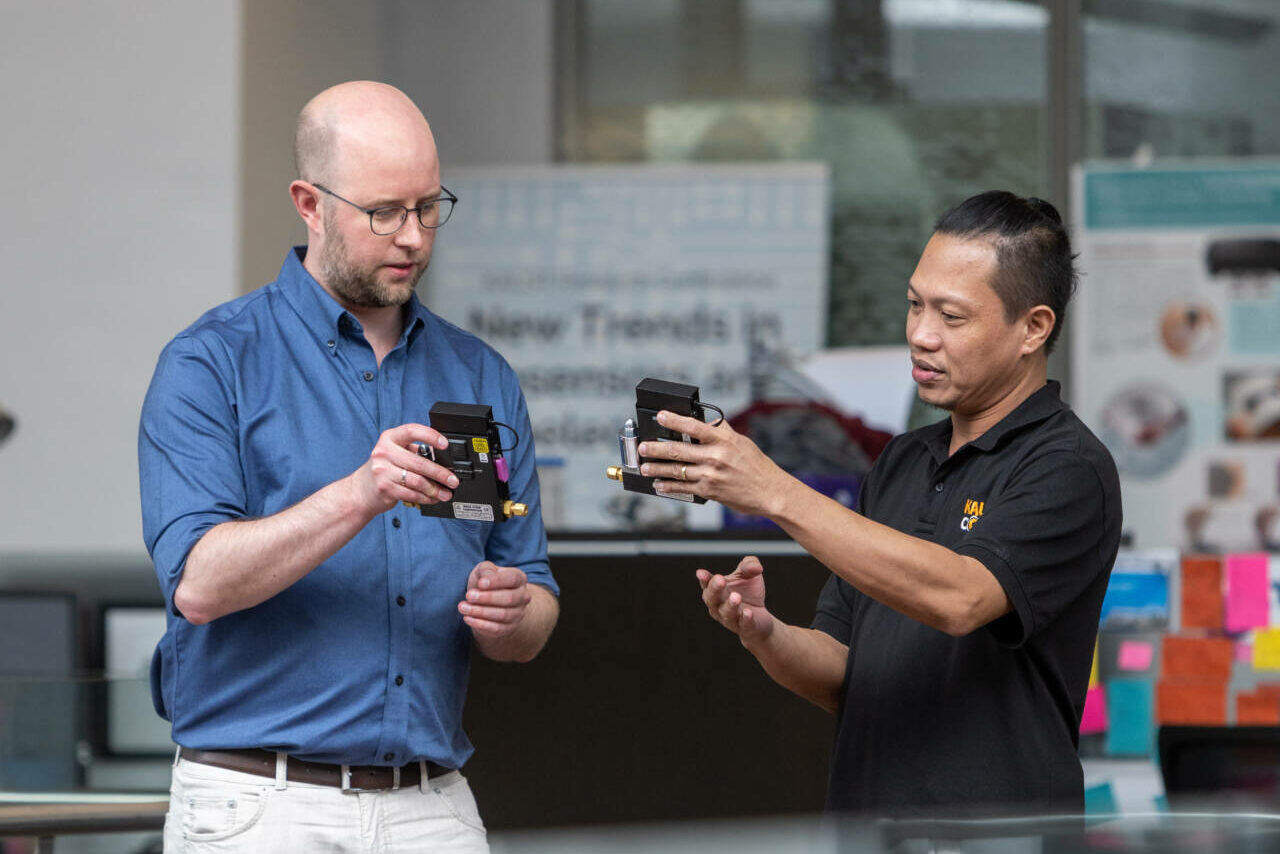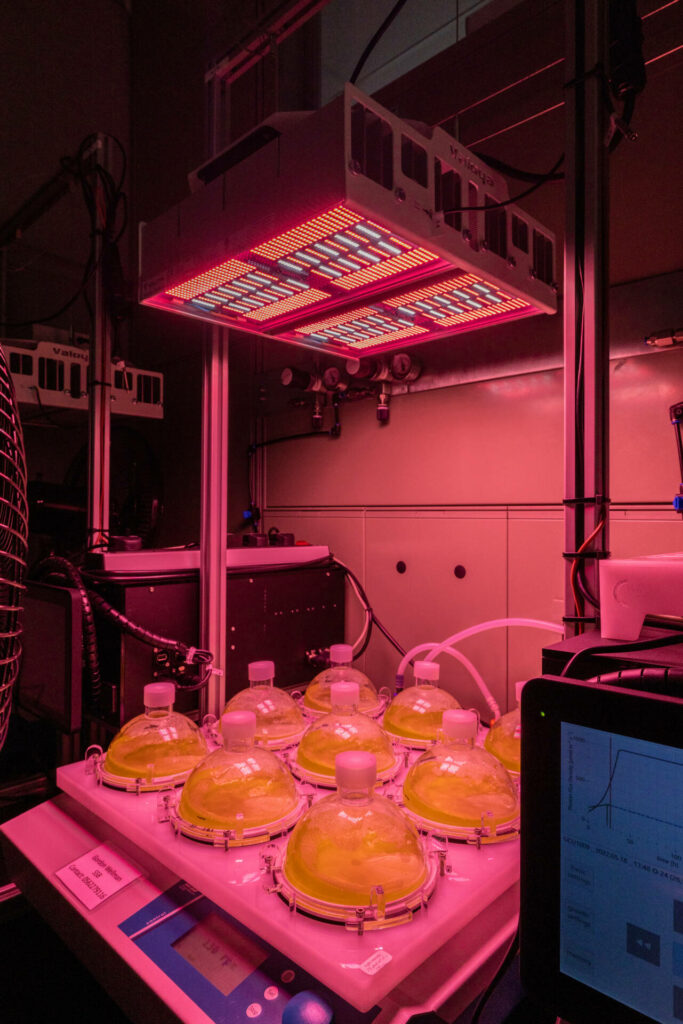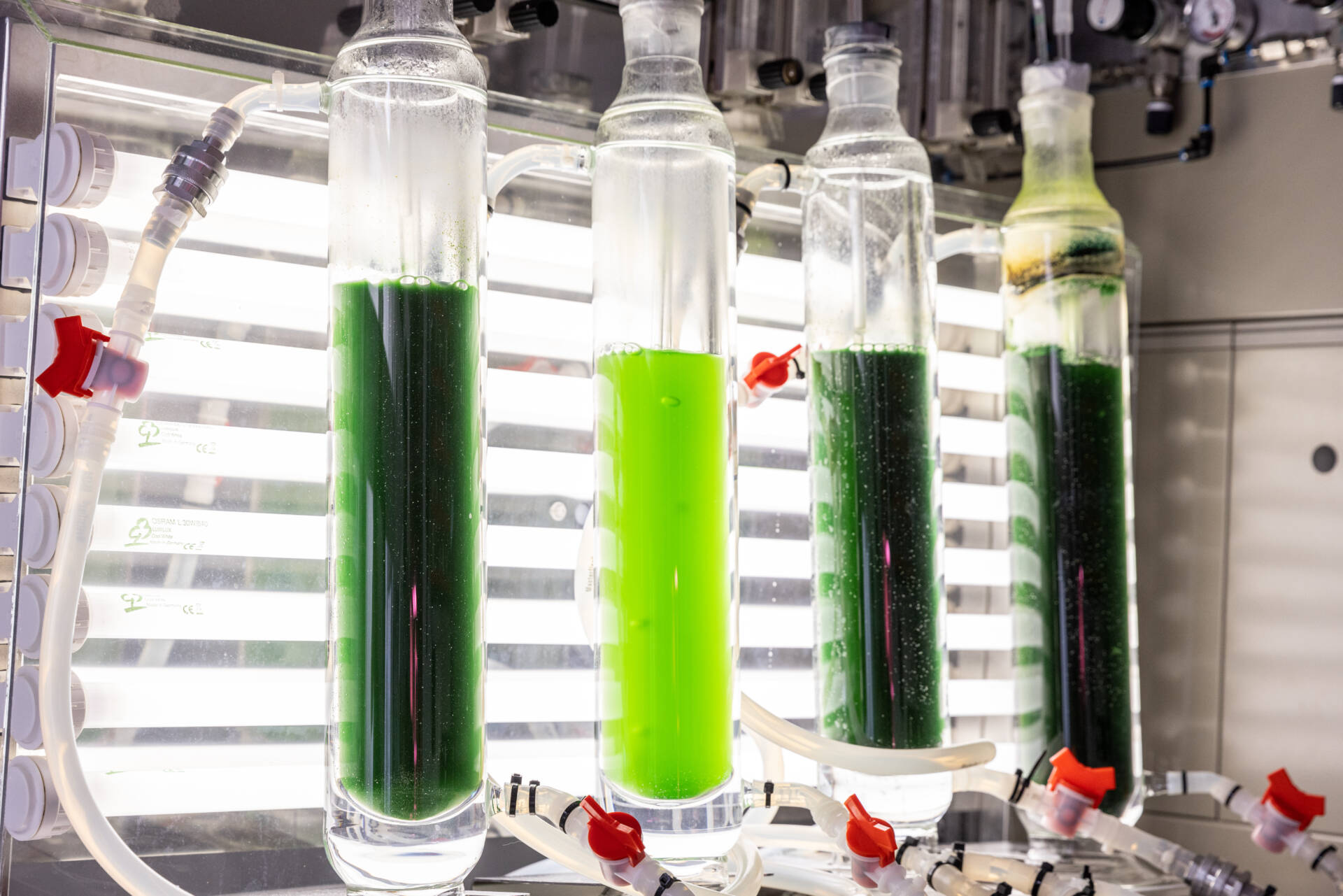Algae, despite being just single-celled aquatic organisms, are tricky to grow under laboratory conditions. Because these small oxygen-producing powerhouses have such diverse potential, KAUST researchers and craftsmen have developed a bespoke laboratory setup to reproduce the conditions needed by algal species for optimal growth.
Biotechnologist Kyle Lauersen leads a specialized lab that applies algal biotechnology implementation for the Arabian Peninsula. The research team uses synthetic biology and engineering to pursue their work in bioprospecting new algal species, developing cultivation infrastructure and generating useful products from algae.
“Our lab is focused on innovation at all levels of the algal biotechnology space,” says Lauersen, which enables them to generate a diverse portfolio of products from microalgae. “With the help of KAUST’s central laboratories (Core Labs), we developed and maintained the specialized laboratory infrastructure that we needed to cultivate these light-driven organisms.”

Credit: ©KAUST2022; Helmy Al Sagaff
The most difficult part of culturing algae in the lab is providing them with enough light to grow well. Algae need bright, consistent light for photosynthesis. The electrical and fabrication teams from the Core Labs built customized illuminated shelving and storage for Lauersen’s lab, using LED lighting tubes to create a spectrum that emulates sunlight.
Algae are healthiest grown under specific concentrations of air and carbon dioxide. This requires precise control over air and carbon dioxide input flow rates using pairs of gas mixers that were mounted and installed by the central and electrical workshop teams.

Credit: ©KAUST2022; Helmy Al Sagaff
“We work at a very specific interface that requires appropriate light and gassing brought to the cultures,” says Lauersen. “We also rely on specialized transparent glass vessels to grow algae, and so we’re delighted that KAUST has its own glassblowing workshop and training program.”
Some algae are extremophiles that thrive at the edges of acidic hot springs. The KAUST team developed double-layered glass tubes, where the outer chamber of each tube contains water that is kept at precisely 42 degrees Celsius, to ensure that the algae growing in the inner chamber stay healthy.
“These particular algae are fascinating; they are red algae in terms of their genetic lineage, but they are colored green, and if you break them open, then they give off a blue pigment into the water; they’re pretty fun!” says Lauersen.
“We have a brilliant glassblowing team in the Core Labs, with master glassblowers in residence and several apprentices – they can make anything,” says Lauersen. “I asked Emilio to copy these tubes and make us some new ones; he only took a week to make them all. It was incredible, and it saved us considerable time and resources.”

Credit: ©KAUST2022; Helmy Al Sagaff

